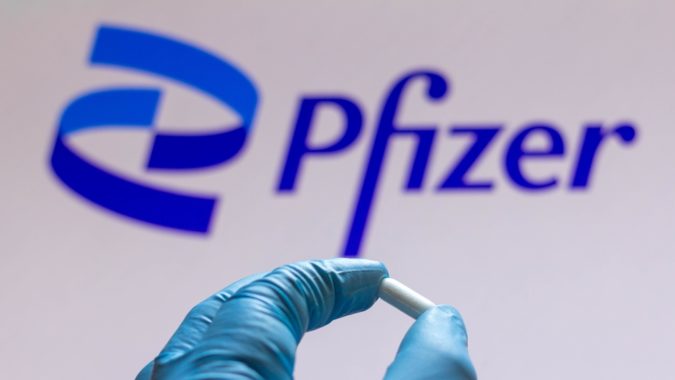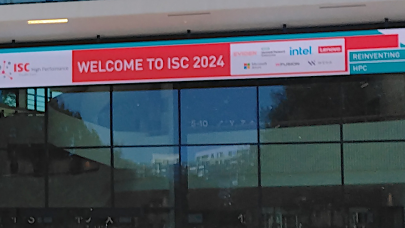Over 16 months ago, Pfizer achieved a historic scientific moonshot — the unprecedentedly swift development and authorization of a novel vaccine for a novel virus using methods that hitherto had not been used in approved drugs at scale. Throughout the pandemic, nearly every public research supercomputer pivoted to some form of Covid research, but the pharmaceutical giants were characteristically cagey about their use of advanced technologies for vaccine and therapeutic development. At a session held during Nvidia’s GTC22 this week, Joe Ucuzoglu, CEO of Deloitte, spoke to Lidia Fonseca, executive vice president and chief digital and technology officer for Pfizer, about the company’s use of HPC and AI in the development of its groundbreaking vaccines and therapeutics for Covid-19.
Ucuzoglu opened the session — a fireside chat titled “Pfizer’s AI-enabled transformation” — by lauding the “fastest development of a novel vaccine in history” and calling Pfizer a “poster child for the full promise of AI to society.” He then continued by asking Fonseca how Pfizer is driving technology innovation in its value chain.
“Pfizer is applying digital data and AI across the entire value chain,” Fonseca said, “making our work faster and easier and enhancing every aspect of our business. We’re driving this end-to-end innovation with three strategic priorities in mind: first, to improve patient health outcomes; second, to bring medicines to patients faster; and third, to fuel tomorrow’s breakthrough therapies.”

On supercomputing
“In research and discovery, we leveraged supercomputing, AI and machine learning to accelerate the identification of the most promising target compounds,” Fonseca said — though, of course, she did not disclose any details of the hardware it operates beyond a cursory reference to help from its host, Nvidia.
“Nvidia has been a key partner in helping advance Pfizer’s supercomputing and AI capabilities,” she said. “Supercomputing helped us to fast-track the progression from discovery to development for Paxlovid, our oral treatment. Using sophisticated computational modeling and simulation techniques, we can now test molecular compounds in a virtual rather than physical lab environment. In the case of Paxlovid, this enabled us to test a fraction of the millions of known compounds that might have worked to treat Covid-19 so that we could quickly narrow down to just those compounds that had the highest chance of becoming medicines.”
(Paxlovid is one of the few therapeutics that has demonstrated consistent effectiveness in reducing the risk of death from a Covid infection. To learn more about how Paxlovid works to disable SARS-CoV-2, read further reporting from HPCwire on supercomputer simulations of the antiviral here.)
“Supercomputing and advanced analytics also helped us hone Comirnaty, our Covid vaccine,” Fonseca continued. “Many of the allergic reactions that clinical trial participants reported while testing our vaccine resulted from certain lipid nanoparticles in the vaccine itself. Using supercomputing, we ran molecular dynamics simulations to find the right combination of lipid nanoparticle properties that reduce allergic reactions, thereby creating as safe and effective a vaccine as possible.”
A visualization of Paxlovid’s inhibition mechanism, produced on the MareNostrum 4 supercomputer.
On AI and machine learning
Fonseca repeatedly touched on how advanced technologies had transformed Pfizer’s clinical trial processes, which can often take years under normal circumstances.
“To set up our clinical trial for Covid, we used real-time predictive models to forecast the virus’ prevalence at a county level, identifying where the next big wave of infection would hit,” Fonseca explained. “This helped our development team optimize their selection of clinical trial sites based on where we anticipated recruitment being strongest. That’s how, in just four months, we were able to launch our clinical trial with 46,000 participants at 150 sites in six countries.”
“For patients, we launched an enhanced adverse event portal with AI capabilities to manage patient reporting more efficiently during the clinical trials,” she continued. “We also leveraged AI and machine learning to identify discrepancies in how clinical trial participants reported their symptoms in response to the vaccine, which was critical to our study timelines and to maintaining data quality and integrity.”
“During the vaccine clinical trials, we aggregated and refreshed the trial data every four hours. This meant that we could get the latest data to our clinicians and scientists with greater speed and frequency than before Covid, when it could take a few weeks after each participant visit to aggregate the data.”
Once the trials were done and Comirnaty was approved, Pfizer’s eye turned to using ML and AI to optimize shipping and distribution. “To support the manufacturing and distribution of more than three billion doses of our vaccine in 2021, we deployed several important data and AI capabilities,” Fonseca said. “We implemented AI and machine learning to predict product throughput and yield; this supports more consistent production and allows our manufacturing to be more predictable — an important consideration, given the urgency of scaling up our vaccine production.”
“Additionally, we used both AI and machine learning to predict product temperatures and enable preventative maintenance for the more than 3,000 freezers that house our vaccine doses, and we also leverage IoT and sensors to monitor and track vaccine shipments and temperatures at close to 100 percent accuracy — pretty important, as you can imagine.”
On the future
Ucuzoglu also asked Fonseca to speak to the future of advanced technologies in healthcare and at Pfizer, and she agreed to gaze into her “crystal ball” for the next five to ten years.
“The growing application of quantum computing will drive speed in discovery and development that we cannot imagine today,” she said, “[and] the landscape of AI companies will continue to proliferate, with new AI players that specialize in various areas, including data generation, data aggregation, advanced analytics and AI value generators that create algorithms.”
There would, she said, be more applied algorithms; more use of predictive technologies in drug discovery and clinical trials; and more decentralization of these trials. “There will be a substantial number of AI-discovered molecules,” she added.
“We’re seeing the healthcare industry being rewired across the entire patient journey,” Fonseca had said earlier in the session. “The pandemic actually served as a catalyst. … I believe Covid-19 accelerated these trends by as much as five years.”


























































